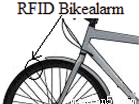0 134723 134731 134737 134741 134747 134749 134753 134759 134761 134767 134773 134777 134779 134783 134789 134791 134797 134801 134803 134807 134809 134813 134815 134817 134818 134819 134821 134822 134823 134825 134827 134831 134833 134837 134839 134843 134849 134851 134857 134861 134863 134867 134873 134879 134881 134887 134891 134893 134899 134903 134909 134917 151629
 B.
B. 
 D.
D. 